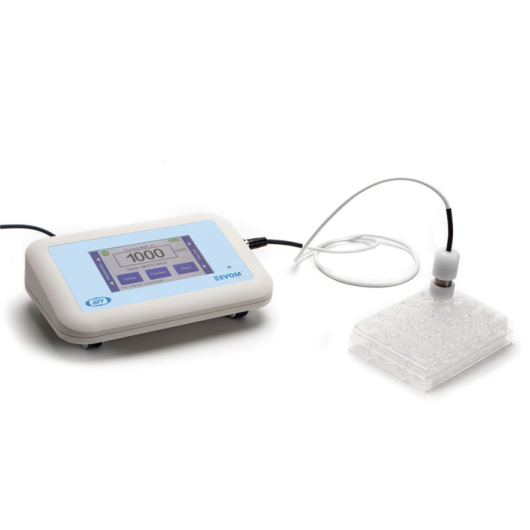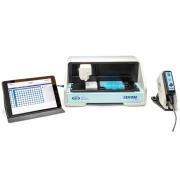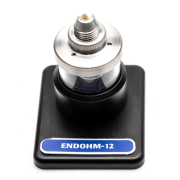






World Precision Instruments
EVOM™ Manual for TEER measurement with automatic data logging
Code EVM-MT-03-02
Confluence of a cellular monolayer is determined by an increase or a plateau in tissue resistance detected using the unique electronic circuit of the EVOM™ Manual and the new STX4 electrode. The EVOM™ Manual qualitatively measures cell monolayer health and quantitatively measures cell confluence. The EVOM™ Manual produces a low AC current that avoids electrode metal deposits and adverse effects on tissues which can otherwise be caused by higher DC currents. The EVOM™ Manual uses low current and voltages and is designed for non-destructive testing for epithelial monolayer confluence in cell cultures. In addition, resistance readings are unaffected by membrane capacitance or membrane voltage. The accuracy and repeatability of the EVOM™ Manual-STX4 system makes this instrument ideal for permeability, PD and other detailed membrane studies.
Uzziniet vairāk
funkcijos
Eliminating the need to log data by hand, the EVOM™ Manual features automatic data logging for streamlined data collection. When used with the footswitch it enables handsfree recording of measurements.
At the heart of the EVOM™ Manual is our latest processor and circuitry, providing users with quick, easy and reliable readings due to its fast stabilization, automatic twenty times sampling average and low noise design. The auto ranging resistance feature allows for fast resistance measurements, and an over-range display feature eliminates false readings. The EVOM™ Manual has adjustable current levels in three fixed ranges with two lower ranges for sensitive membranes and high resistance ranges up to 100 KΩ.
- Low noise design offers greater resolution and accuracy
- Automatic 20X sample averaging improves accuracy and stability
- Adjustable fixed measurement currents (2, 4 or 10 μA)
- Resistance auto ranging from 1 Ω to 100,000 Ω or with three fixed current ranges
- Reliable low current, low voltage design prevents metal ion transport
- Fast resistance stabilization on low levels under 200 Ω with resolution to 0.1 Ω
- Ergonomic tilt stand for low glare operation
- Graphical display of popular plates (6, 12, 24, 96) for trend analysis
- The display shows the most recent set of parameters
- Automatic plate indexing operation with or without control well subtraction for resistance and potential difference (PD) measurements
- Continuous data logging via USB (PC, Mac, Linux)
- Secure data transfer to PC via the EVOM™ Companion Application
- Saves date stamped data to a spreadsheet readable file on a USB drive
- Upgradable firmware
Applications of EVOM Manual system
- Measure epithelial or endothelial tissues for confluence, TEER and potential difference
- Permeability, conductance and drug studies
- Continuous digital monitoring of a target membrane
- Common studies
- Blood-brain barrier transport
- Lung epithelial tissue studies
- Intestinal tissue studies
- Skin studies
Saistītie produkti












